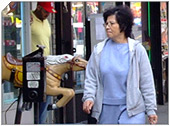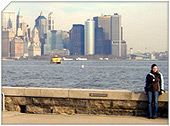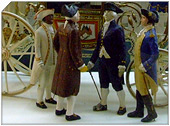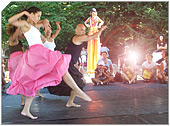Carroll Gardens, Brooklyn, New York City
|
Getting Started
Index
NYC Neighborhoods
Manhattan
Brooklyn
Queens
Bronx
Staten Island
NYC Icons
Chrysler Building
Flatiron Building
Empire State Building
Safe NYC
NYPD
FDNY
NYC Weather
NYC Climate
NYC Weather Forecast
Winter Season
Spring Season
Summer Season
Fall Season
NYC History & Politics
New York City History
Tammany Hall and Politics
New York City Politicians
New York City Personalities
Culture of Gotham City
Culture of the city
Cultural diversity
City in popular culture
|
Carroll Gardens is a neighborhood in the New York City borough of Brooklyn, USA. The area is named for Charles Carroll, a revolutionary war veteran who was also the only Roman Catholic signer of the Declaration of Independence. The Carroll Gardens park, a block-long area of playgrounds, walkways and sitting areas between Court and Smith Streets, with Carroll Street as its southern boundary, was constructed in the late 19th century and is named for Charles Carroll. The neighborhood is part of Brooklyn Community Board 6.
A long-standing Italian neighborhood of family-run stores, Carroll Gardens is now sprinkled with cafes, boutiques and antique shops. Many of the people drawn in by this infusion consider the neighborhood part of a new "meta-neighborhood" called BoCoCa, a name comprising the first two letters of each of the three neighborhoods in it, Boerum Hill, Cobble Hill, and Carroll Gardens. It shares its northern boundary with Cobble Hill at Degraw Street and Boerum Hill at Warren Street, while extending south to Hamilton Avenue and Red Hook. Prior to the gentrification movement in the mid-1960s, Carroll Gardens was considered by residents to be part of Red Hook. In the late 1940s, however, the southern tip of Red Hook was cut off from the rest of the neighborhood by the building of the Brooklyn-Queens Expressway and Gowanus Expressway, and the area now known as Carroll Gardens took on a separate and distinct character of its own. Today, Carroll Gardens is a middle-class, upscale community, while Red Hook, which had retained its working-class, waterfront ambience, has only recently begun to feel the effects of gentrification.
Before Italians settled the area, Carroll Gardens was settled by Irish Americans in the early 19th century and, in the mid-19th century, by Norwegian-Americans, who founded the Norwegian Seamans' Church, an imposing brownstone structure that was once visited by the King of Norway during an official visit to the United States, and which still stands (although it is now a condominium) on the corner of First Place and Clinton Street. In 1846, Richard Butts created the front "gardens" to the famous brownstone houses in the oldest section of the neighborhood. The brownstones are set back from the street by 30-40 feet, to create atypical (for Brooklyn) large front gardens. The Carroll Gardens Historic District, which includes some of the finest examples of these brownstones with large front gardens, is bounded roughly by Carroll Street to the south, President Street to the north, Hoyt Street to the east and Smith Street to the west.
|
New York City Search
Quick NYC
|
|
|
 How safe is New York City?
How safe is New York City? Contrary to popular belief, the City consistantly ranks in the top ten safest large cities in the United States. The NYPD is the largest municipal police force in the world and has it's own Movie/TV Unit. |

New York has a humid continental climate resulting from prevailing wind patterns that bring cool air from the interior of the North American continent. New York winters are typically cold with moderate snowfall.  New York Weather Forecast New York Weather Forecast |

New York's two key demographic features are its density and diversity. The New York City metropolitan area is home to the largest Jewish community outside Israel. It is also home to nearly a quarter of the nation's South Asians, and the largest African American community of any city in the country.  Ethnic composition Ethnic composition |

New York Newspapers
 
|



 New York Weather Forecast
New York Weather Forecast
 Ethnic composition
Ethnic composition


















